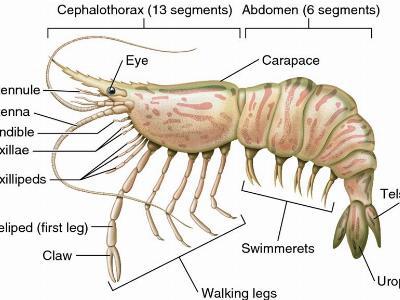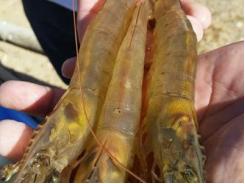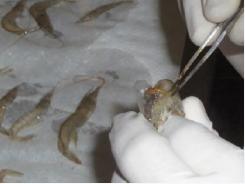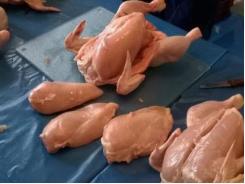Chemical and physical factors that affect the biological growth of shrimp

In order L. Vannamei can grow optimally, it needs a place to live that can provide state physics, chemistry, and biology is optimal. Physical environmental conditions are including temperature and salinity. While the chemical conditions is including pH, dissolved oxygen (DO), nitrate, orthophosphoric, and the presence of plankton as natural feed. Should be noted that environmental conditions can inhibit the growth of shrimp, shrimp can be deadly, such as the emergence of toxic gases and pathogenic microorganisms.
Temperature is one factor controlling the speed of biochemical reactions. This is because the temperature can determine the metabolic rate of shrimp and other aquatic organisms. Low temperatures will result in a lower metabolic system in contrast to the high temperatures will spur a more rapid metabolism. In order for the cultivation of L. Vannamei to work well, pond waters temperature range suggested is between 28 - 32o C.
Water transparency values for shrimp cultivation are recommended between 30-60 cm. The value of transparency associated with the color of water caused by the content and the amount of plankton contained therein. If the pond water green leaves of 35 cm brightness figures, when the dark green water color and brightness 20 cm of water when a blackish brown color brightness range between 60-80 cm.
The influence of pH is harmful to the shrimp are usually caused by the mechanism of increasing the concentration of toxic or poisonous substances, such as an increase in anionic ammonia (NH3) at pH above 7. Whereas in waters with low pH will cause an increase in the fraction of anionic sulfide (H2S) and the toxicity of nitrite, as well as physiological disorders shrimp. In the long term, low pH conditions would result in the release of sodium into the water body. On shrimp culture, the pH level will change from day to day and tended to decrease during the growing season the shrimp, because the accumulation of organic acids and nitrification of ammonia. Optimal pH range 7.5 to 8.3 for prawn growth.

Concentration of dissolved oxygen (DO) in the pond waters affects the physiology of the shrimp. Oxygen levels is the most important environmental factor in shrimp ponds. Decreasing DO in the water, would result in shrimp stress and susceptible to disease. Shrimp growth will be slow because the rate of feed consumption decreases with decrease in dissolved oxygen concentration. In ponds with dissolved oxygen concentration 1.0 mg / l cause shrimp can’t eat. The dissolved oxygen concentration of 1.0 -1.4 mg / l causes the shrimp do not grow, while the DO below 5mg / l causes the shrimp has limited growth.
Nitrate control and orthophosphoric is a necessary nutrient in the growth of phytoplankton. Both types of nutrients can be directly utilized by phytoplankton. Nitrogen compounds as waste products of digestion of proteins can accumulate to dangerous levels in the pond. Shrimp using nitrogen component of the protein that has been digested (the amino group NH2) to form the protein itself, but its metabolism is not able to convert nitrogen into energy. An ammonia level from 0.02 to 0.05 mg / l was able to inhibit the growth of aquatic animals in general, whereas the levels of 0.45 mg / l can inhibit growth of 50% shrimp. Later in the levels of 1.29 mg / l has resulted in the death of the shrimp
Có thể bạn quan tâm
Phần mềm

Phối trộn thức ăn chăn nuôi

Pha dung dịch thủy canh

Định mức cho tôm ăn

Phối trộn phân bón NPK

Xác định tỷ lệ tôm sống

Chuyển đổi đơn vị phân bón

Xác định công suất sục khí

Chuyển đổi đơn vị tôm

Tính diện tích nhà kính

Tính thể tích ao hồ




 New disease detected in Vannamei shrimps
New disease detected in Vannamei shrimps  Unleashing the genetic potential of Black Tiger Shrimp
Unleashing the genetic potential of Black Tiger Shrimp